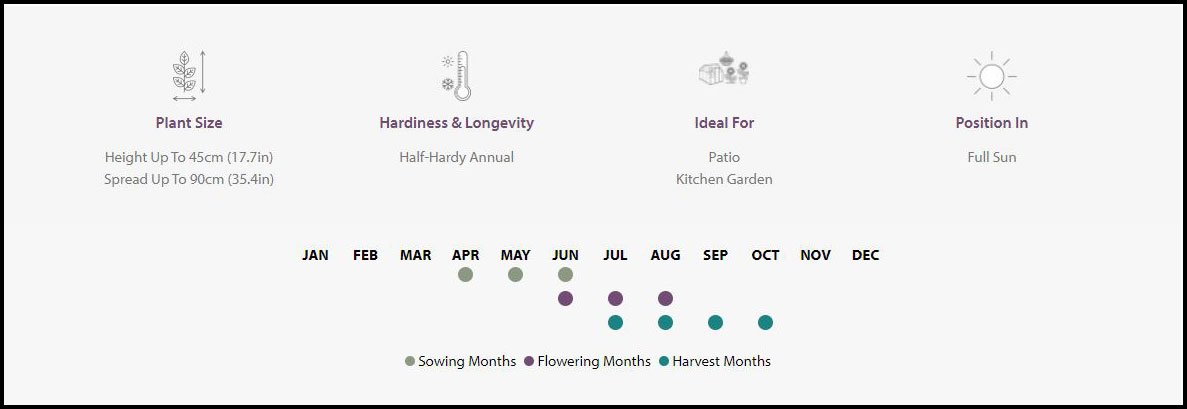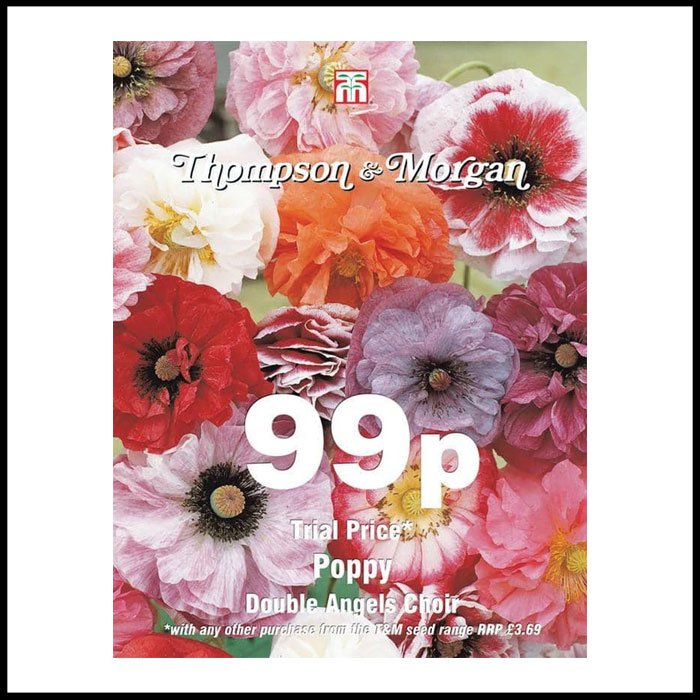Courgette - Defender F1 Hybrid
Description
This customer favourite crops early, offering a long picking season and yields almost twice that of other varieties. Courgette 'Defender' has an open habit which lets you easily see and pick the heavy, solid mid-green courgettes. This RHS AGM variety also has excellent resistance to Cucumber Mosaic Virus. Height: 45cm (18"). Spread: 90cm (36").
Culinary note: Some parts of these flowers are edible.
Companion planting: Try growing courgettes with Calendula to attract pollinating insects which will in turn pollinate your courgette flowers.
Description
This customer favourite crops early, offering a long picking season and yields almost twice that of other varieties. Courgette 'Defender' has an open habit which lets you easily see and pick the heavy, solid mid-green courgettes. This RHS AGM variety also has excellent resistance to Cucumber Mosaic Virus. Height: 45cm (18"). Spread: 90cm (36").
Culinary note: Some parts of these flowers are edible.
Companion planting: Try growing courgettes with Calendula to attract pollinating insects which will in turn pollinate your courgette flowers.
Description
This customer favourite crops early, offering a long picking season and yields almost twice that of other varieties. Courgette 'Defender' has an open habit which lets you easily see and pick the heavy, solid mid-green courgettes. This RHS AGM variety also has excellent resistance to Cucumber Mosaic Virus. Height: 45cm (18"). Spread: 90cm (36").
Culinary note: Some parts of these flowers are edible.
Companion planting: Try growing courgettes with Calendula to attract pollinating insects which will in turn pollinate your courgette flowers.
Sow courgette seed indoors from April to May for transplanting later on, or direct sow outdoors from late May to June. Prepare the soil in early spring by adding plenty of well rotted farmyard manure to improve its structure and fertility.
Indoors, sow seed at a depth of 2cm ( 3/4") in 7.5cm (3") pots of free-draining, seed sowing compost. Place in a propagator or seal container inside a plastic bag at a temperature of 20-25C (68-77F) until germination which takes 5-7 days. Do not exclude light, as this helps germination. Once germinated, grow courgettes on in cooler conditions until all risk of frost has passed and courgette plants are large enough to be transplanted. Gradually acclimatise them to outdoor conditions over 7 - 10 days before planting courgettes outdoors in rich fertile, well drained soil in full sun at a distance of 90cm (36") apart. Cover with a protective netting or fleece to prevent attack from birds and insects. When growing courgettes, a thick mulch of organic matter spread around the plants will help to conserve moisture at the roots.
Alternatively direct sow courgettes outdoors at a depth of 2cm ( 3/4") and a distance of 90cm (36") apart. Sow 2 seeds per station and thin out the weakest seedling per station after germination.
Water courgettes regularly - do not allow the soil to dry out as this will impair their development. Hoe between plants regularly to prevent weeds from establishing. Courgettes appreciate an application of a high potash fertiliser every two weeks during the growing season. Hand pollinating courgettes is not usually required when they are grown outdoors. However, for indoor cultivation, the female flowers can be fertilised by pressing a male flower against them. Begin harvesting courgettes from midsummer onwards when they are 10cm (4") long. Regular harvesting will encourage more courgettes to be produced. Culinary note: Courgette flowers are edible and can be eaten cooked or added raw to salads.















